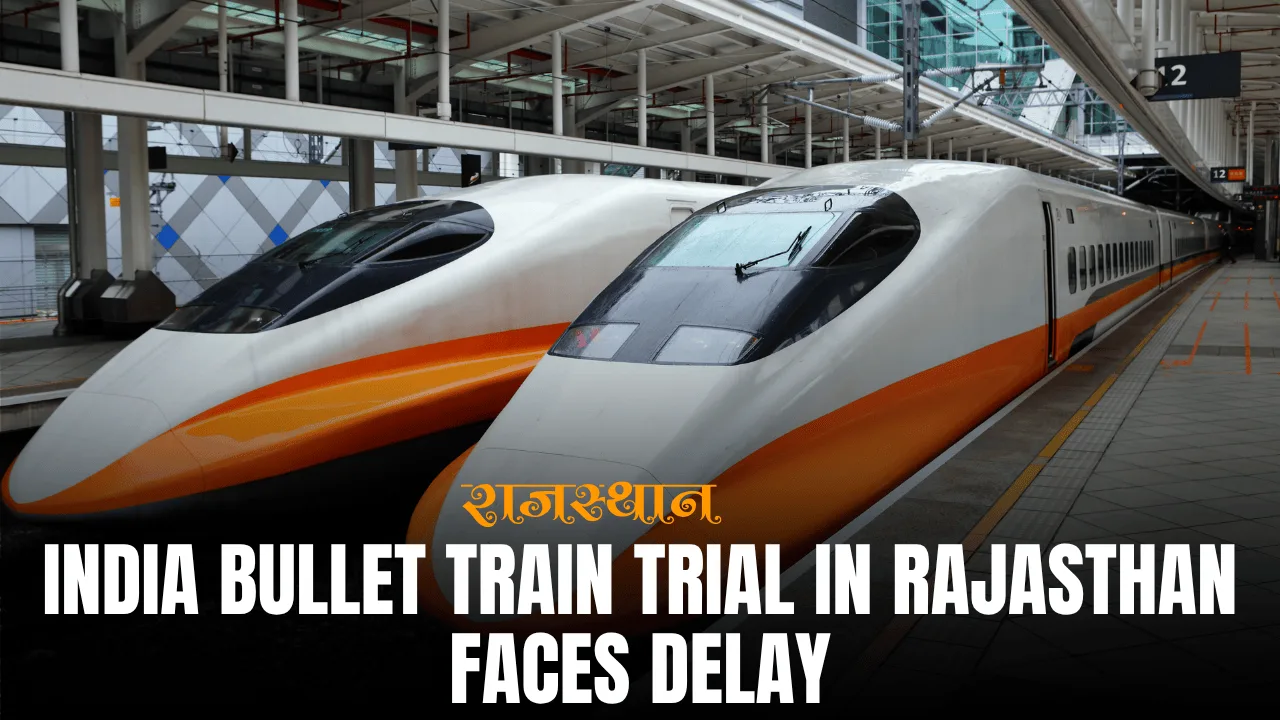Listen to This Article
Starting May 31, 2025, several daytime train services between Bengaluru and Mangaluru will be suspended for approximately five months due to ongoing electrification work on the Sakleshpur–Subrahmanya Road Ghat section. This critical infrastructure upgrade aims to enhance operational efficiency and pave the way for future services like the Vande Bharat Express.
Electrification Project Details
The South Western Railway (SWR) is carrying out electrification work on a difficult 36-kilometer segment between Donigal and Shiribagilu. This segment is particularly difficult due to its steep terrain and lack of road access, necessitating the transportation of materials solely by train. To facilitate this, a daily four-hour block has been scheduled, during which material trains operate at a maximum speed of 30 kmph.The project is slated for completion by October 2025.
Affected Train Services
The following train services will be temporarily suspended
- Train Nos. 16539/16540: Yesvantpur–Mangaluru Junction Weekly Express (Saturdays and Sundays) – Cancelled from May 31 to November 2.
- Train Nos. 16575/16576: Yesvantpur–Mangaluru Gomteshwara Tri-weekly Express – Cancelled from June 1 to October 31.
- Train Nos. 16515/16516: Yesvantpur–Karwar Tri-weekly Express – Cancelled from June 2 to November 1. Despite these cancellations, three pairs of passenger trains will keep running on the Bengaluru–Mangaluru route to reduce disruption.
Concerns During Monsoon Season
The suspension of daytime train services has raised concerns among regular commuters, especially with the approaching monsoon season. Road transport in the Western Ghats is often disrupted during heavy rainfall, making train services vital for connectivity. Passenger associations and civil society groups have expressed disappointment over the lack of consultation and alternative arrangements.
Finishing the electrification project marks an important milestone in bringing the Vande Bharat Express to the Bengaluru–Mangaluru route.. While the final decision rests with the government and railway board, the electrification of this challenging ghat section brings the proposed service closer to reality.
his five-month suspension of the Bengaluru–Mangaluru train services is a necessary but inconvenient step in upgrading critical railway infrastructure. Here's a balanced perspective:
While the project is critical for the future of Karnataka’s rail connectivity, better communication, public consultation, and interim transport planning could have eased the burden on passengers. Authorities should consider launching temporary shuttle services or diversion routes to maintain some form of daytime connectivity between Bengaluru and Mangaluru.
Pros
- Modernization of Railway Infrastructure
- The electrification of the ghat section will allow for faster, more reliable trains.
- It supports future high-speed services like the Vande Bharat Express.
- The electrification of the ghat section will allow for faster, more reliable trains.
- Eco-Friendly Transport
- Replacing diesel engines with electric trains reduces pollution and fuel costs.
- Replacing diesel engines with electric trains reduces pollution and fuel costs.
- Lower Operational Costs
- Electric trains have lower running and maintenance costs over the long term.
- Electric trains have lower running and maintenance costs over the long term.
- Increased Capacity & Speed
- Electrified tracks can handle more trains with better speed and efficiency.
- Electrified tracks can handle more trains with better speed and efficiency.
- Boost to Regional Connectivity
- Once completed, it will improve long-term connectivity across Karnataka and boost tourism and trade between Bengaluru and coastal regions.
- Once completed, it will improve long-term connectivity across Karnataka and boost tourism and trade between Bengaluru and coastal regions.
Cons
- Major Inconvenience to Daily Passengers
- Thousands of commuters and tourists will face travel disruption, especially with no full replacement services.
- Thousands of commuters and tourists will face travel disruption, especially with no full replacement services.
- Monsoon Season Complications
- With heavy rains in the Western Ghats, roads often become dangerous, and rail becomes the only safe option — which now won’t be available during daytime.
- With heavy rains in the Western Ghats, roads often become dangerous, and rail becomes the only safe option — which now won’t be available during daytime.
- Negative Impact on Local Economy
- Small businesses, tourism operators, and logistics relying on train traffic may suffer financially.
- Small businesses, tourism operators, and logistics relying on train traffic may suffer financially.
- Limited Communication & Planning
- Lack of public consultation and poor communication from railway authorities created dissatisfaction among citizens.
- Lack of public consultation and poor communication from railway authorities created dissatisfaction among citizens.
- No Proper Alternatives
- The absence of special or diverted train services or adequate bus alternatives is a key drawback.
The Bengaluru–Mangaluru train route shutdown for five months can lead to several long-term effects and future developments, both positive and potentially negative. Here's what it can trigger or influence in the future:
1. Introduction of High-Speed Trains
- Once electrification is complete, the route becomes eligible for Vande Bharat Express or other semi-high-speed services.
- The travel time between Bengaluru and Mangaluru could be significantly shortened, which would enhance tourism and business opportunities..
2. Increased Passenger Volume in the Long Run
- Improved efficiency and faster travel times will attract more passengers.
- May encourage people to switch from road to rail travel due to better comfort and speed.
3. Economic Boost to Coastal & Ghat Regions
- Enhanced connectivity may boost trade, tourism, and local businesses in regions like Sakleshpur, Subrahmanya, and Mangaluru.
- Improved logistics and freight services could emerge post-electrification.
4. Infrastructure Upgrades on Other Routes
- The success of this project could encourage Indian Railways to upgrade other ghat or hilly sections across the network.
- It sets a model for handling electrification in difficult terrains.
5. Pressure on Authorities for Better Crisis Management
- The inconvenience caused may lead to public demands for better communication, alternate transport options, and transparent planning in future shutdowns.
- Railways might create crisis-handling SOPs for long route closures.
6. Risk of Overdependence on Electrified Routes
- If alternate diesel routes are phased out without redundancy, any future power grid failure or technical issue can cause bigger disruptions.
7. Environmental & Operational Gains
- With full electrification, long-term carbon emissions will decrease, and operational costs will reduce for Indian Railways.
- The Bengaluru–Mangaluru train route is undergoing a significant transformation due to the electrification of the Sakleshpur–Subrahmanya Road ghat section, a 36 km stretch between Donigal and Shiribagilu. Managed by the South Western Railway (SWR) and executed by RITES, this project is scheduled for completion by October 2025.. The challenging terrain and lack of road access necessitate the transportation of materials solely by train, with a daily four-hour block allocated for this purpose.
Train Services Affected
Several daytime train services between Bengaluru and Mangaluru have been suspended to enable electrification work:
- Train Nos. 16539/16540: Yesvantpur–Mangaluru Junction Weekly Express (Saturdays and Sundays) – Cancelled from May 31 to November 2.
- Train Nos. 16575/16576: Yesvantpur–Mangaluru Gomteshwara Tri-weekly Express – Cancelled from June 1 to October 31.
- Train Nos. 16515/16516: Yesvantpur–Karwar Tri-weekly Express – Cancelled from June 2 to November 1.
Despite the cancellations, three pairs of passenger trains will remain operational on the Bengaluru–Mangaluru route to help minimize disruption..
Monsoon Season Concerns
The suspension of daytime train services has raised concerns among regular commuters, especially with the approaching monsoon season. Road transport in the Western Ghats is often disrupted during heavy rainfall, making train services vital for connectivity. Passenger associations and civil society groups have expressed disappointment over the lack of consultation and alternative arrangements.
Future Prospects
The completion of the electrification project is a crucial step toward launching the Vande Bharat Express on the Bengaluru–Mangaluru route.. While the final decision rests with the government and railway board, the electrification of this challenging ghat section brings the proposed service closer to reality.
Passengers are advised to plan their travel accordingly and stay updated on further announcements from the South Western Railway.
 Unlock Your Savings Today!
Unlock Your Savings Today!
Get the best deals with unbeatable service and exclusive offers.

 Grow Your Business with Proven Digital Marketing
Grow Your Business with Proven Digital Marketing
Ready to attract more customers and outshine your competition? Our tailored digital marketing strategies help you rank higher, generate qualified leads, and build a brand people trust. Let’s take your business to the next level.
Digital Marketing Solutions in Leading Cities


 Disclaimer
Disclaimer
The views expressed by experts in this article are their own and do not necessarily reflect the opinions of any website, organization, institution, or affiliated entity. If you have any concerns regarding this article, please contact us at contact@quantamminds.com and also on WhatsApp
Frequently Asked Questions
Why is the Bengaluru–Mangaluru train route shut for five months?
To carry out electrification work on the Sakleshpur–Subrahmanya Road ghat section, aimed at upgrading infrastructure and enabling faster, electric trains.
Which trains are affected by the shutdown?
Trains like Yesvantpur–Mangaluru Weekly Express, Gomteshwara Tri-weekly Express, and Yesvantpur–Karwar Tri-weekly Express are cancelled during this period.
Will any trains still operate between Bengaluru and Mangaluru?
Yes, three pairs of passenger trains will continue to run to maintain some level of service.
What is the long-term benefit of this shutdown?
The electrification will reduce travel time, improve efficiency, lower pollution, and prepare the route for Vande Bharat Express and other high-speed trains.
Are any alternative travel options being provided?
No official alternative arrangements have been announced, which has led to public concern, especially with the approaching monsoon season.








 Pallavi Singh on 2025-05-22
Pallavi Singh on 2025-05-22

 Ashwani Kumar
Ashwani Kumar 



